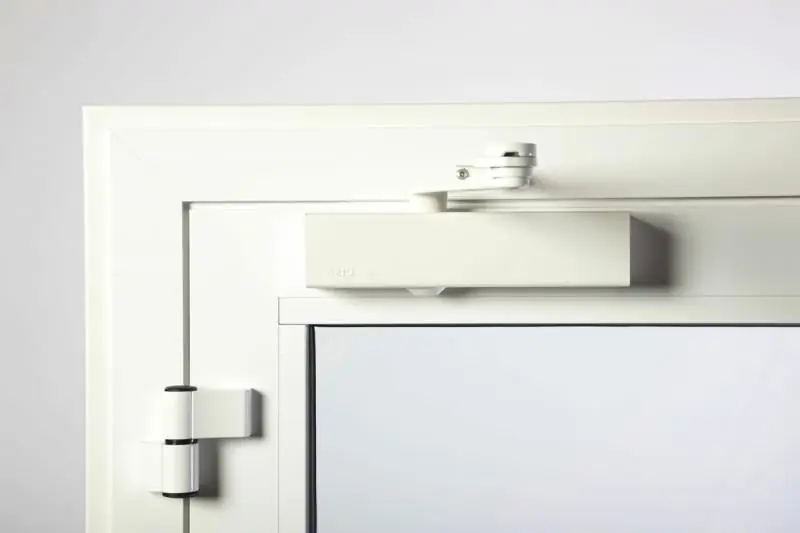
Table of contents:
- Author Bailey Albertson [email protected].
- Public 2023-12-17 12:53.
- Last modified 2025-01-23 12:41.
Self-adjustment of the door closer: basic rules and recommendations

The door closer allows the door to close smoothly and without knocks. This increases the service life of both the door leaf and the locks. Due to the fact that the closer is constantly subject to heavy loads, in order to ensure the normal and reliable operation of the mechanism, it must be carefully and regularly looked after. It is enough to carry out the necessary adjustments and the device will work flawlessly for many years. There are several options for regulation, all settings can be done by hand, you just need to know how to do it correctly.
Content
-
1 When you need to adjust the door closer
- 1.1 In what cases it is necessary to adjust the closer
- 1.2 Do I need adjustment after installing the device
- 1.3 Video: how to choose a door closer
-
2 Adjusting the door closer
- 2.1 Adjusting the door speed
- 2.2 Locking control
- 2.3 Adjusting the open position
- 2.4 How to loosen the door closer
- 2.5 Setting the closing delay
- 2.6 Video: adjusting the closer
-
3 Expert advice
3.1 Video: features of the operation and adjustment of the closer in winter
- 4 Reviews
When you need to adjust the door closer
The modern door closer has appeared relatively recently. Its task is to ensure smooth closing of the door leaf. Such devices can be installed both on the entrance and interior doors in houses and apartments, and in offices, shops, entrances, etc. Previously, a spring was used to close the door, but at the same time the canvas slammed shut with a knock and an impact occurred, which led to a quick failure of both locks and door leaf.

If earlier springs were used to close the door, now there are modern devices called door closers
The presence of a door closer on the doors suggests that when they are opened, a certain effort will have to be applied, which is accumulated in the mechanism located inside such a device. When the leaf is closed, the door closer smoothly returns the doors to their original position.
Before proceeding with the description of the process of adjusting the closers, you must briefly familiarize yourself with their types. You can find mechanisms of the following types on sale:
-
spring. This is the simplest model, which works by compressing the spring when the door is opened, after which it expands and the leaf closes;

Spring closer The spring closer is simple in design, as it works by compressing the spring
-
cam with sliding (slide) traction. Its work is based on the smooth sliding of the slide rod. This mechanism is usually used for door panels of light weight, as well as where such indicators as compactness, smooth running and small dimensions of the closer are important;

Cam closer The cam closer has a sliding (slide) rod
-
door closer with a gear drive. This is the most common option. Its work is based on the movement of the door under the action of gears. The toothed door closer is more durable, therefore it can be installed on heavy doors.

Door closer with gear drive The operation of the gear closer is ensured by the gears available in it
In addition, you need to decide on the types of closer according to the installation method:
-
waybills. These are the simplest models that are attached to the top of the door. It is they who are usually mounted on the entrance doors to a house or apartment. It is easy to adjust the overhead closers, for this there are special screws on the mechanism body;

Surface-mounted closer Surface-mounted door closer is attached to the top of the door
-
floor. These models also have a simple design, but they are installed on the floor. In houses and apartments, floor models are practically not used. They are mainly installed in offices, shops and other high-traffic establishments;

Floor closer Floor spring fixed to the floor
-
hidden. Such structures are difficult to install and regulate. This is due to the fact that they are either inside the door or in the floor, so it is difficult to get to them.

Concealed door closer A hidden door closer is hidden in the door leaf, frame or floor
In what cases it is necessary to adjust the closer
The door closer is used intensively, therefore, to ensure its normal operation, it is recommended to carry out adjustment work at least twice a year. If the attendance of the room is large, then the adjustment may need to be carried out more often.
Since there is oil inside most door closers, adjustments must be made in warm and cold seasons. This is due to the fact that when the temperature changes, the density of the oil also changes and the smooth operation of the device will depend on this.

Most of the door closers contain oil, its density depends on the temperature, so adjustments should be made in warm and cold seasons
It is necessary to constantly monitor the operation of the mechanism. If you are not satisfied with the speed of closing the door or it happens with jerks, and the canvas is not attracted well, to eliminate such shortcomings, it is imperative to adjust the closer.
Do I need adjustment after installing the device
The location of the adjusting screws will differ depending on the door closer design. Despite this, the adjustment is carried out according to the same scheme - when the screws are turned clockwise, the speed and force of the mechanism increase and vice versa.
Since the weight of the door leaf on which the door closer is mounted can be different, the adjustment must be carried out immediately after installation. Turn the screws very smoothly. It is recommended to do no more than ¼ a turn, after which it is necessary to check the operation of the closer. If the screw is unscrewed more than 2 turns, then it can fall out of the seat, and this will lead to oil leakage.
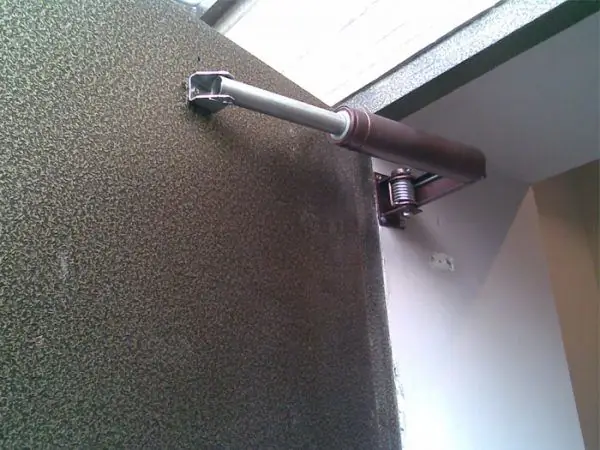
Since the weight of the door can be different, it is necessary to adjust the closer immediately after its installation.
Immediately after the installation of the closer, they check its operability and if something does not suit, perform the adjustment. The speed at which the door leaf will close is changed by rotating the corresponding screw. If you need to adjust the latch, use a different screw.
Video: how to choose a door closer
Door closer adjustment
Now that you know the types of door closers and decide which one is installed on a particular door, you can start adjusting it.
Although there are several types of closers, the principle of adjustment will be almost the same. Regardless of whether an invoice is installed, a floor or hidden mechanism, you first need to study the instructions and determine how many adjustments this model has. The simplest mechanisms have only two adjusting screws located on the body of the device: one is responsible for the speed of closing the web, and the second for its closing. After that, the necessary function of such a device is adjusted. The process of adjusting hidden structures will be more difficult, but here you can do it yourself. It is enough to figure out where the adjusting screws are and with their help adjust the necessary parameters of the closer.
To complete the work, you will need the following tools:
- set of screwdrivers;
- a set of hex and open-end wrenches;
-
pliers.

Tools To adjust the closer you will need simple hand tools.
Before proceeding directly to the adjustment, you need to decide what the following terms mean:
- closing speed of the door leaf. This parameter is characterized by the time it takes for a door open all the way to reach the point where it starts to close. Usually, the closing time of the canvas is 5 seconds, but depending on its purpose, this figure may vary;
- final closing speed. This function of the closer provides a sharp decrease in the closing speed of the door leaf, which prevents it from hitting the frame hard. It works at approximately 10-15 ° before the deadlock;
- opening brake. After the web begins to open, it will linger in a position that can be set. This will prevent the door from hitting a nearby wall or furniture;
- closing delay. After fully opening, the door stops for a while, after which it slowly moves for 10-15 °, and only then begins to move at normal speed. This function allows several people to pass at the same time or carry bulky items;
-
latch - the closing force provided by the closer, it allows you to overcome the resistance of the air and the lock, which occurs when the door is closed. The presence of a latch does not allow the door leaf, equipped with a closer, to remain in a half-open state.

Closer adjustments There are several adjustments of the closer, at least there should be a setting for the closing speed and latching
Adjusting door speed
The first step in adjusting the door closer is to set the closing speed. On the front doors, it is recommended to set a high speed of closing the door so as not to lose heat; for interior doors, this indicator depends on the preferences of the owners.
davydvolodin: 2018-27-08, 16:57
Above there is information that the simplest models have 2 screws, hidden closers may have more.
"> A door closer, depending on its model, may have from 2 to 5 adjusting screws, their purpose should be seen in the instructions for the purchased device.
To adjust the door speed:
-
Open the decorative panel. Behind it are the adjusting screws. In the simplest models of closers, they can be located immediately on the body and access to them is open.

Removing the decorative panel Before adjusting, the decorative panel must be removed from the closer
- Define the screw responsible for adjusting the speed of closing the door. It's easy to do, you just need to study the instructions for the purchased device.
-
Speed regulation. Depending on the model, the adjustment can be done with a screwdriver or wrench. When tightening / unscrewing the screw, the door closing speed changes up or down.

Speed regulation Find the speed adjustment screw and use it to make the adjustment
Deadlop regulation
The latch adjustment can only be carried out after the door closing speed has been set. To adjust this parameter, you must use the second screw, which is available on all door closer models:
- Find the second adjusting screw on the body.
-
Change its position. They try to make sure that, before reaching 10-15 ° before the door leaf closes, there is a sharp slowdown in its movement, and then it is tightly pressed against the door frame.

Latch adjustment They turn the screw and make sure that, before reaching 10-15 ° before the door leaf closes, there is a sharp slowdown in its movement, and then it is tightly attracted to the frame
Open position regulation
If it is often necessary to fix the door in the open position, you need to buy models with an adjustment called hold open. This function is used when it is necessary to bring in or take out of the room large objects:
-
The doors open to the required angle, while it does not have to be the maximum. Next, a special lock is screwed all the way in, which locks the canvas in the desired position.

Open position adjustment Adjustment of the open position allows you to fix the doors at a certain opening angle
- To return the door to its normal position, it is enough to pull it slightly towards yourself, after which it closes. If you open the canvas again, it will lock in the previously selected position.
- When the need for this function disappears, the lock is unscrewed and the closer works in the same mode as before.
How to loosen a door closer
If the doors are difficult to open, the door closer must be loosened. To do this, loosen the adjusting screws a little and make sure that a little effort is required to open the door leaf.

To loosen the closer, you need to slightly unscrew the adjusting screws
Closing delay setting
Sometimes situations arise when it is necessary for the doors to close not immediately, but with some delay. This function is also not available on all models. To understand if it is on your closer, you need to look at the number of adjusting screws. There should be more than two of them, and the purpose of each of them can be found out by studying the instructions. This function allows you to set up the door closer so that several people can pass at the same time while the door is open. It is especially relevant in hospitals, shops, educational institutions.
Setting the door closing delay:
- Find a latch that is responsible for this adjustment. This can be done after studying the instructions for the purchased closer.
- Open the canvas to the position in which its delay should occur.
-
Tighten the adjusting screw. Now, when the canvas is opened to the specified position, it will start to close with a certain delay. When one person passes, as a rule, he does not open the doors strongly, so they work as usual.

Opening delay Opening delay allows the door to close not immediately, but after a while
Video: adjusting the closer
Expert advice
During self-adjustment of the door closer, you must adhere to the basic rule: the adjusting screws cannot be unscrewed more than 2 turns. Almost all mechanisms run on oil, and if you unscrew the screws more, it will start to flow out. Oil is poured into the device under pressure, so it will not be possible to fill the closer on your own and you will have to buy a new mechanism.
To ensure the maximum service life of the closer, certain requirements must be met:
- take into account the conditions in which the closer will be used. There are models that are not intended for outdoor installation;
- before starting the adjustment, be sure to study the attached instructions. This will help you determine which screws are responsible for different adjustments;
- do not forcefully close the doors on which the door closer is installed. This leads to an earlier failure of the mechanism;
- make sure that children do not roll on the door, do not hang heavy objects on it. Thus, the weight of the canvas increases, which negatively affects the operation of the closer;
-
do not fix the canvas with the closer in the open position by placing heavy objects or special stops under it. If such a need arose, you need to use the fixing function, but it should be borne in mind that not all mechanisms have it.

Fixing the door Do not fix doors with a closer using heavy objects or special stops
If you really need to fix the door, and the closer does not know how to do this, some craftsmen disconnect the lever rods and thus turn off the closer completely. To implement this method of fixation requires a certain amount of time and effort. To do this, use a screwdriver or a wrench to unscrew and pull out the screw connecting the two rods of the lever. If the need to fix the door leaf often arises, it is better to purchase a door closer with the corresponding function.
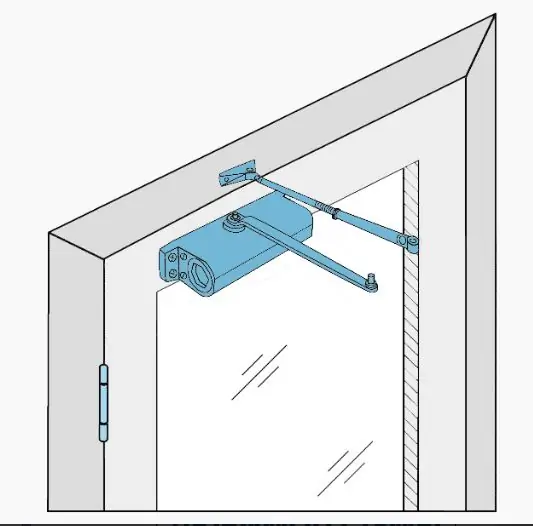
To be able to fix the door with the closer in the open position, you can separate the lever rods
A door closer is a fairly simple mechanism, and if it is properly operated and adjusted in time, it will work for a long time and reliably
Video: features of operation and adjustment of the closer in the winter
Reviews
Knowing how and when to adjust the door closer, you can cope with this task yourself. In order for such a device to work reliably throughout the maximum service life, it is necessary to make the right choice, then carry out its installation slowly and reliably, as well as make the necessary adjustments in time and carefully. Only if the described rules are observed, the door closer will have a beautiful appearance, work flawlessly, and also provide the comfort of the owners and neighbors for many years.
Recommended:
Sheathing The Front Door With MDF Panels, How To Choose The Material And Carry Out The Work
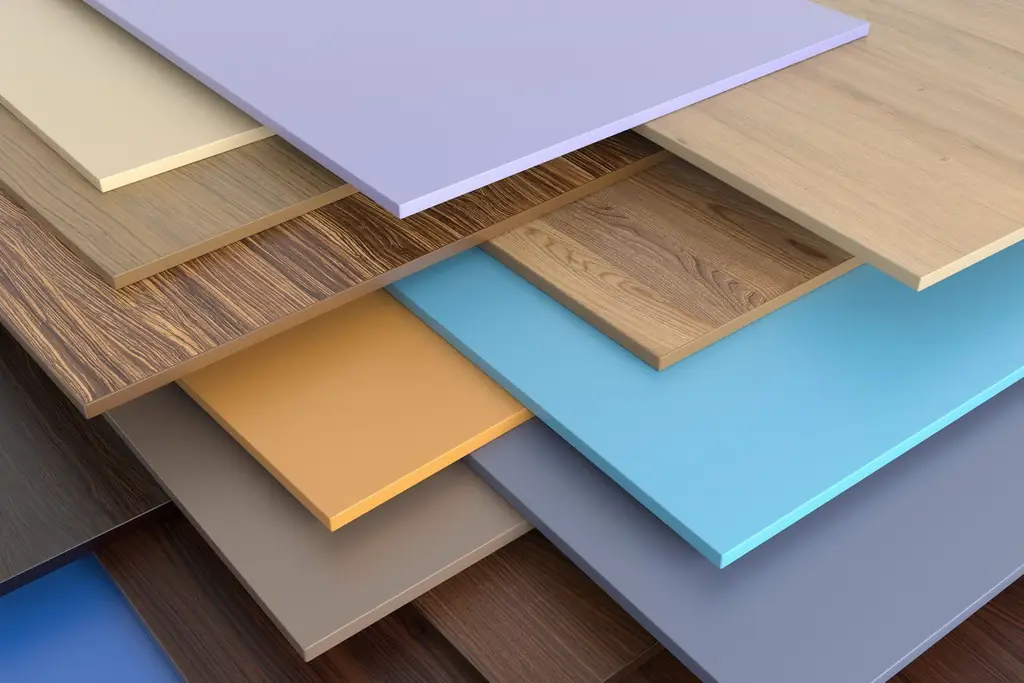
What is MDF panel on the front door and how to choose it correctly. Do-it-yourself plating of entrance metal doors and doorways with MDF panels
Making Glass Doors, As Well As How To Install Them Correctly And What Tools Are Required To Carry Out The Work
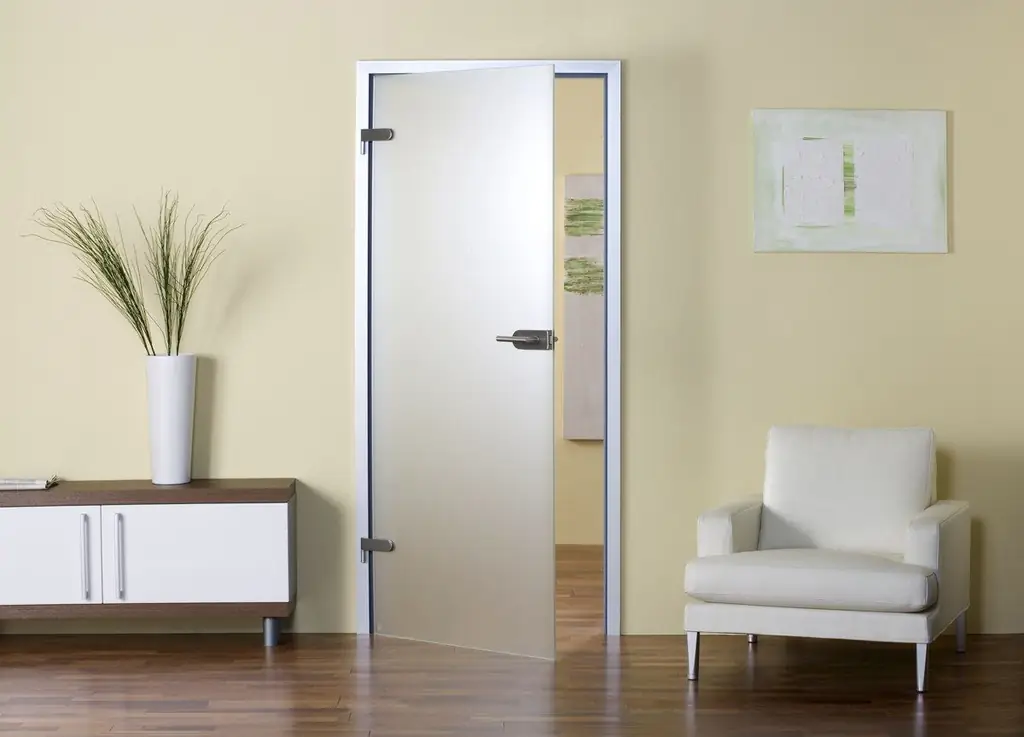
Self-manufacturing technology of glass doors. How to install, adjust, dismantle them correctly. What tools can be used
Do-it-yourself Installation Of Interior Doors, As Well As What Tool Is Required To Carry Out The Work
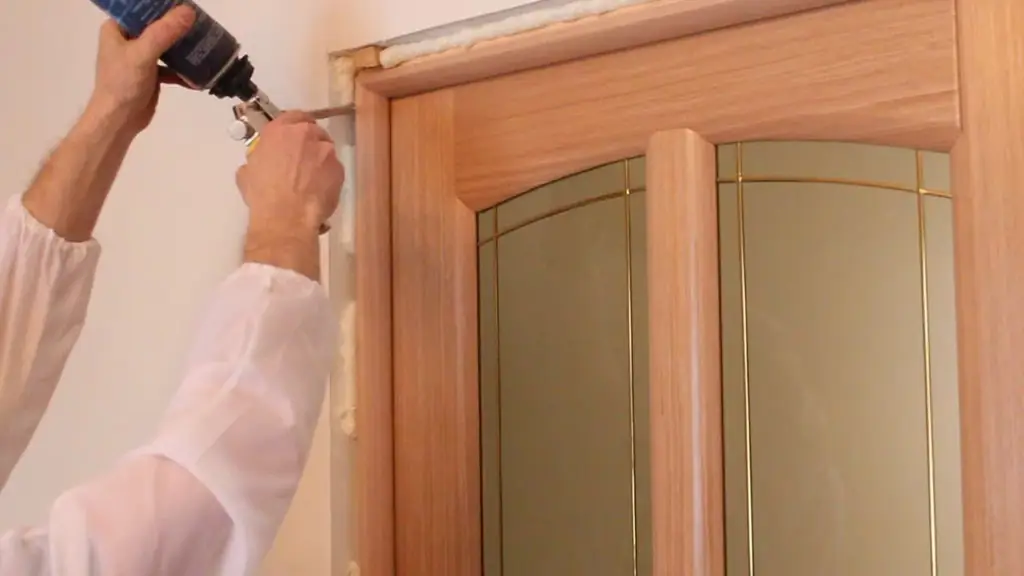
Types and methods of installing interior doors. The order of work when installing doors. Tools and supplies. Features and nuances of installing fittings
Door Closer: Functions, Varieties And Device, As Well As What To Consider When Choosing

What is a door closer and how it works. Varieties of mechanisms, how to choose the right one. Installation and adjustment
How To Update The Opera Browser For Free - Why And When Is It Done, Check The Existing Version Of Opera, Put A New One, Carry Out The Settings

Why you need to install updates in Opera. How to do this if auto-update did not work, and also how to roll back the browser to a previous version
